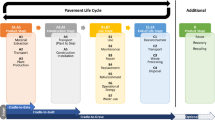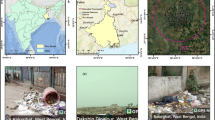Abstract
Nowadays, the world is witnessing the ever increasing need of Tunnel excavation due to their unique features and the kind of human applied plans. This has led to increase in demand of excavating this engineering factor. Tunnel excavation process faces a lot of challenges due to environmental and technological complexities which causes the economic evaluation and investigation of this project to be difficult. It is tried to develop the proposed model with regard to efficiency concept in order to evaluate and investigate the efficiency of relative economic performance of Tunnel excavation projects and turn to its modeling and implementing by data envelopment analysis and Fuzzy DEMATEL techniques. The results in Iran showed that the proposed model can turn to investigation and evaluation of economic efficiency of Tunnel excavation by considering two optimistic (ideal) and pessimistic perspectives such that the Tunnel excavation process of “Karaj water transition” and “Cheshmelangan water transition” among 12 rock Tunnel excavation projects of Iran in the time period of 1998–2013 were respectively introduced as the most efficient and the most inefficient rock Tunnel excavation projects.


Similar content being viewed by others
References
Cooper WW, Seiford LM, Tone K (2000) Data envelopment analysis: a comprehensive text with models, applications, references, and DEA-solver software. Springer, New York, pp 31–80
Delisio A, Zhao J, Einstein HH (2013) Analysis and prediction of TBM performance in blocky rock conditions at the Lötschberg Base Tunnel. Tunnelling and Underground Space Technology, no 33, pp 131–142
Fouladgar MM, Yadani-Chamzini A, Basiri MH (2011) Risk evaluation of tunnelling projects by fuzzy topsis. International conference on management, no 1, pp 1219–1232
Golestanifar M, Goshtasbi K, Jafarian M, Adnani S (2011) A multi-dimensional approach to the assessment of Tunnel excavation methods. Int J Rock Mech Mining Sci 48:1077–1085
Hollmann FS, Thewes M (2013) Assessment method for clay clogging and disintegration of fines in mechanised tunneling. Tunn Undergr Space Technol 37:96–106
Karkehabadi V (2013) Selecting the best Tunnel boring machine by applying research operation techniques. Islamic Azad University of Alborz science and research, thesis of master, p 56
Khademi Hamidi J, Shahriar K, Rezai B, Rostami J, Bejari H (2010) Risk assessment based election of rock TBM for adverse geological conditions using Fuzzy-AHP. Bull Eng Geol Environ 69:523–532
Lin CJ, Wu WW (2008) A causal analytical method for group decision making under Fuzzy environment. Expert Syst Appl 34:205–213
Mehregan MR (2013) Data envelopment analysis: quantitative models for organizational performance evaluation. University of Tehran, p 20
Opricovic S, Tzeng GH (2003) Defuzzification within a multicriteria decision model. J Uncertain Fuzziness Knowl Based Syst 11(5):635–652
Ramoni M, Anagnostou G (2013) Tunnel boring machines under squeezing conditions. Tunn Undergr Space Technol 25:139–157
Shahriar K, Sharifzadeh M, Hamidi JK (2008) Geotechnical risk assessment based approach for rock TBM selection in difficult ground conditions. Tunn Undergr Space Technol 23:318–325
Wu WW, Lee YT (2007) Developing global manager’s competencies using the fuzzy DEMATEL method. Expert Syst Appl 32:499–507
Yang YO, Shieh HM, Tzeng GH (2013) A VIKOR technique based on DEMATEL and ANP for information security risk control assessment. Inf Sci 232:482–500
Yazdani-Chamzini A, Haji-Yakhchali S (2012) Tunnel boring machine (TBM) selection using fuzzy multi criteria decision making methods. Tunn Undergr Space Technol 30:194–204
Zarei HR, Uromeihy A, Sharifzadeh M (2011) Evaluation of high local groundwater inflow to a rock Tunnel by characterization of geological features. Tunn Undergr Space Technol 26:364–373
Zarei HR, Uromeihy A, Sharifzadeh M (2013) A new Tunnel inflow classification (TIC) system through sedimentary rock masses. Tunn Undergr Space Technol 36:1–12
Author information
Authors and Affiliations
Corresponding author
Rights and permissions
About this article
Cite this article
Karkehabadi, V., Zarei, H., Uromeihy, A. et al. Investigating the Economic Performance of Tunnel Excavation in Iran: 1998–2013. Geotech Geol Eng 32, 1353–1362 (2014). https://doi.org/10.1007/s10706-014-9805-0
Received:
Accepted:
Published:
Issue Date:
DOI: https://doi.org/10.1007/s10706-014-9805-0




